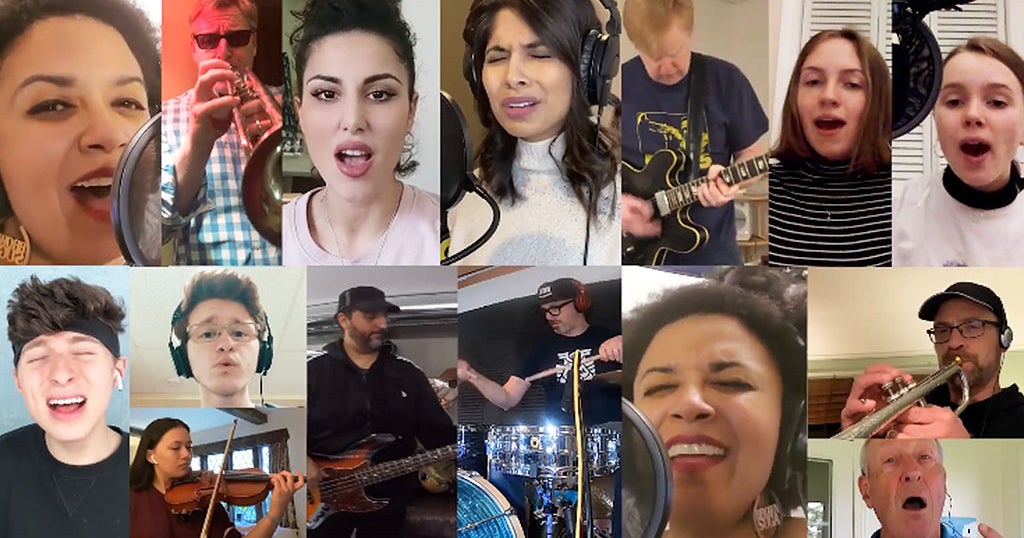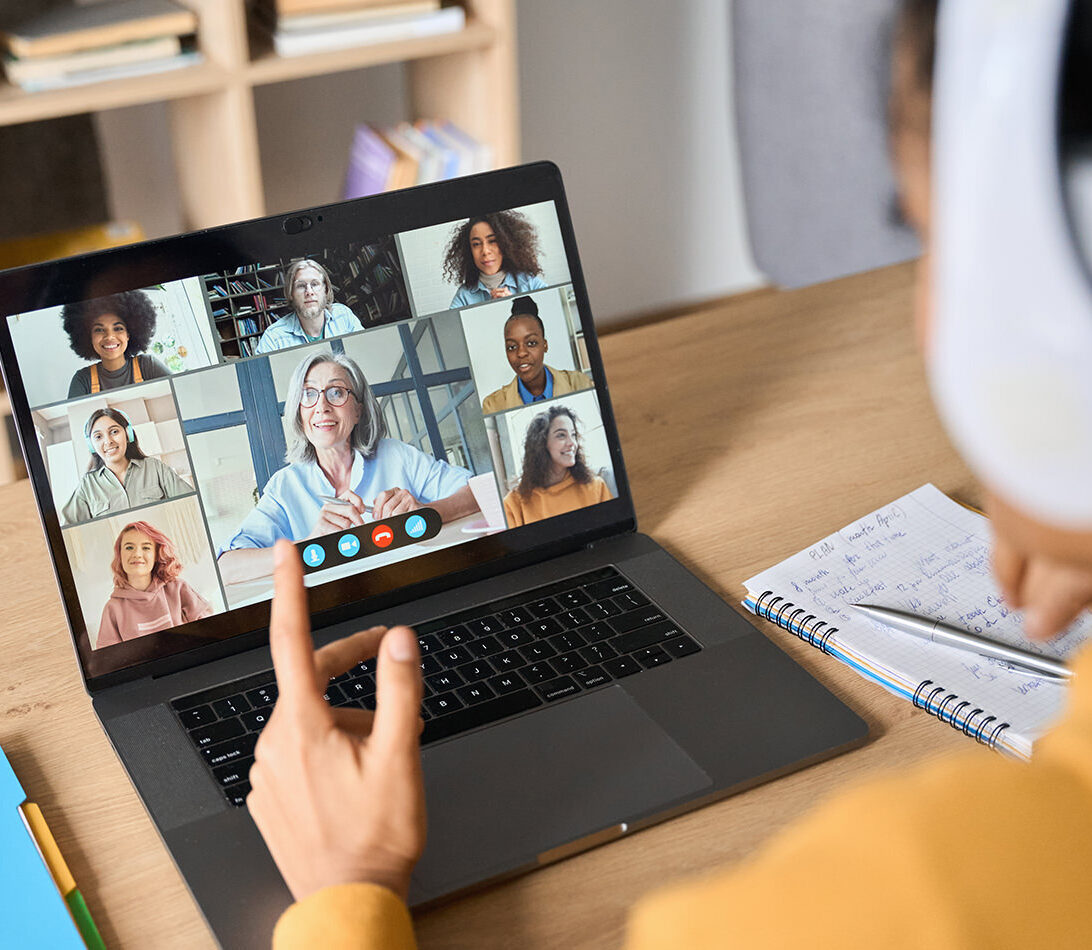Zoom & Musicians: How COVID-19 Changed Music (And What's Next)
How did a global health crisis reshape the landscape of music, pushing it into the digital realm? The COVID-19 pandemic forced the music industry to adapt rapidly, and the use of video conferencing tools like Zoom became a cornerstone of this transformation.
The reverberations of the coronavirus pandemic were felt across the globe, impacting nearly every sector of society. Among those most profoundly affected was the music industry. With live performances grinding to a halt and social gatherings severely restricted, musicians and the professionals who supported them were faced with an unprecedented challenge: how to continue creating, sharing, and, crucially, earning a living. This article delves into the impact of the pandemic on the music community, specifically exploring the pivotal role that video conferencing platforms, like Zoom, played in navigating this new reality. It will examine both the hurdles and the opportunities that emerged as a result of this forced digital pivot, highlighting how Zoom, in particular, became an unexpected stage for artists worldwide.
The initial shockwaves of the pandemic were devastating. Gigs were canceled, tours were postponed indefinitely, and the very foundations of how musicians made their living were threatened. The traditional venuesconcert halls, clubs, and barswere shuttered, leaving artists with no direct avenues to connect with their audiences. But, in the face of adversity, the music community, known for its resilience and adaptability, began to seek alternative solutions. One of the most immediate and widely adopted was the use of video conferencing technology. Platforms like Zoom, which had previously been utilized primarily for business meetings and personal communications, quickly gained traction as a means for musicians to connect with their fans, collaborate with other artists, teach lessons, and even perform virtual concerts.
Zoom, with its user-friendly interface and accessibility, rapidly ascended to become a crucial tool. Suddenly, musicians, comedians, and a whole host of other performers discovered that they could, in essence, transplant their stage presence into the digital space. Fitness classes, happy hours, and even club DJs migrated to Zoom, creating virtual hubs for community and entertainment. Court proceedings, presidential campaigns, weddings, and bar mitzvahs were conducted through the platform, demonstrating its adaptability. Individuals learned to cut their own hair; they adapted in countless unexpected ways.
The shift wasn't without its challenges. Latency issues on platforms like Zoom presented problems for music classes and rehearsals, creating a tangible delay between the input and output of sound. Despite these hurdles, the desire to keep the music alive was stronger. This was where new tools and apps such as Flipgrid and Jamkazam emerged, offering alternative approaches to virtual music collaboration, and expanding the possibilities.
The evolution of the music industry during the pandemic was a fascinating study of adaptation and resilience. The closure of venues and cancellation of live performances presented a massive disruption. In fact, the Vienna Philharmonic Orchestra collaborated with medical researcher Fritz Sterz, trying to get some insight into how the virus spread through live performances. There's still much we don't fully understand about how musicians might spread coronavirus particles in performance settings. Yet, the spirit of the music community prevailed. Artists explored novel ways of engaging with their audiences, leveraging technology to maintain their creative practices. Digital jamming sessions, virtual concerts, and online lessons became commonplace, transforming the way music was both made and consumed.
The digital transformation brought about by the pandemic is also noteworthy because it has given rise to conversations around digital jamming, social impact, and new revenue streams. Some are questioning what the "sound of music" even is during the pandemic, and if the digital pivot is a permanent change for music production and consumption. Now, virtual events are here to stay, even as live music returns. This highlights the lasting impact of the digital innovations spurred by the pandemic.
The crisis highlighted how the use of technology was able to keep many professional musicians stable during a very unstable time. For educational institutions, the pandemic brought to light that those with robust digital education programs were able to navigate the transition to remote learning most effectively. Hugo Indranto, a technology integrationist at Mentari Intercultural School, observed that institutions that had already made significant investments in digital infrastructure and teacher training were better equipped to manage the shift. Such factors proved critical in determining how well music programs adapted to virtual environments, impacting educational outcomes for students and the careers of music educators.
In May 2020, a survey by Apollo Technical suggested that more than 26% of employed individuals were working from home. This number grew to roughly 70% as the pandemic intensified. This large shift shows how quickly the professional landscape can change when forced by extraordinary circumstances. The same trend extended to the music industry, which was forced to reinvent its processes and delivery methods.
The shift to digital, of course, wasn't without its challenges. Privacy concerns and incidents of 'zoombombing' became increasingly prevalent. The issues and difficulties musicians faced in this new era, as well as the overall rise of video conferencing, were explored by CNBC and others.
Following that, theres been much controversy and allegations that some brands have had to deal with. The question remains: Will they continue to stay on top as we move into the second month of remote working and social distancing?
In the world of music, digital accessibility has opened the door for diverse voices and perspectives. Xidus Pain, a renowned rap artist and influential music educator, recently reflected on the importance of Black history in shaping both his personal journey and musical career.
The good news is, after the 30 days is over, you can rinse and repeat by starting the calendar all over again with new content using the same themes. Save time and effort to how zoom affected musicians during covid 2021 without delays. Improve your scholarly work with how zoom affected musicians during covid 2021, now available in a professionally formatted document for seamless reading. Product managers should plan for scalability from the early stages and continually.
The test results found that online learning with zoom meetings is effective.Journal of telemedicine and telecare, 1357633x20981213.
Below is the information about the artist:
| Category | Details |
|---|---|
| Name | Xidus Pain |
| Occupation | Rap Artist, Music Educator |
| Notable For | Influential in the rap genre and Black history advocacy through music. |
| Personal Blog | Discusses the meaning of rap and its influence on his journey and musical career, often referencing events to celebrate Black history month. |
| Impact | Significant contributions through music and education. |
| External Link | Example Website (Replace with actual website if available) |


